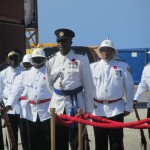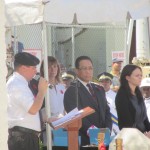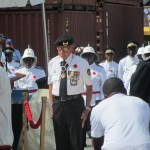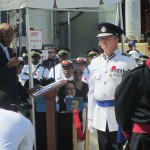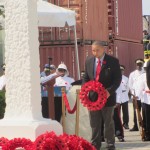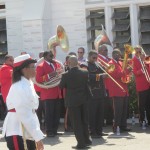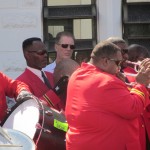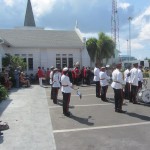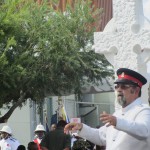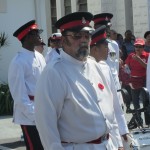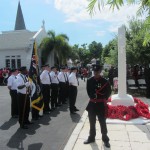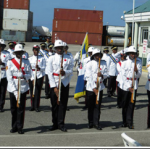Cayman remembers


I was at the Remembrance Sunday Ceremony 2013 at The Cenotaph outside Elmslie Memorial Church last Sunday (10)
It was a hot day and many of the participants from the colour brigades, including the musicians found the going tough from the blazing sun with ne’er a breath of wind to help. The Red Cross volunteers were kept very busy even with the free handout of the water bottles.
Proceedings commenced at 10:45am with the uniformed participants already in place as were the ministers of religion, dignitaries and general public.
 The ceremony started promptly after the arrival of the Police Commissioner, David Baines, Premier Alden McLaughlin and Governor HE Helen Kilpatrick.
The ceremony started promptly after the arrival of the Police Commissioner, David Baines, Premier Alden McLaughlin and Governor HE Helen Kilpatrick.
The Royal Cayman Islands Police Service Band was on hand to play most of the music and trumpet calls and this year they were added to by The Bahamas Brass Band.
Cayman’s Veteran Association members were at the centre of the ceremony although the first wreath of poppies laid on the cenotaph was executed by Governor Kilpatrick. She was followed by the Premier and then leader of the Opposition McKeeva Bush. A member of the Veterans laid a wreath and then others by members of the public most representing Grand Cayman’s various churches. The cenotaph was soon surrounded by a band of red, although I did not think there were as many wreaths laid this year as previous.
However, this may have been because other wreathes were laid at the Seamen’s Memorial a few yards away on the side of the road facing the sea.
The Master of ceremonies was Rev Dr Dave Hazle from Elmslie Church.
What made the Poppy famous?
The significance of the poppy as a lasting memorial symbol to the fallen was realised by the Canadian surgeon John McCrae in his poem In Flanders Fields.
The poppy came to represent the immeasurable sacrifice made by his comrades and quickly became a lasting memorial to those who died in World War One and later conflicts. It was adopted by The Royal British Legion as the symbol for their Poppy Appeal in aid of those serving in the British Armed Forces, after its formation in 1921.

